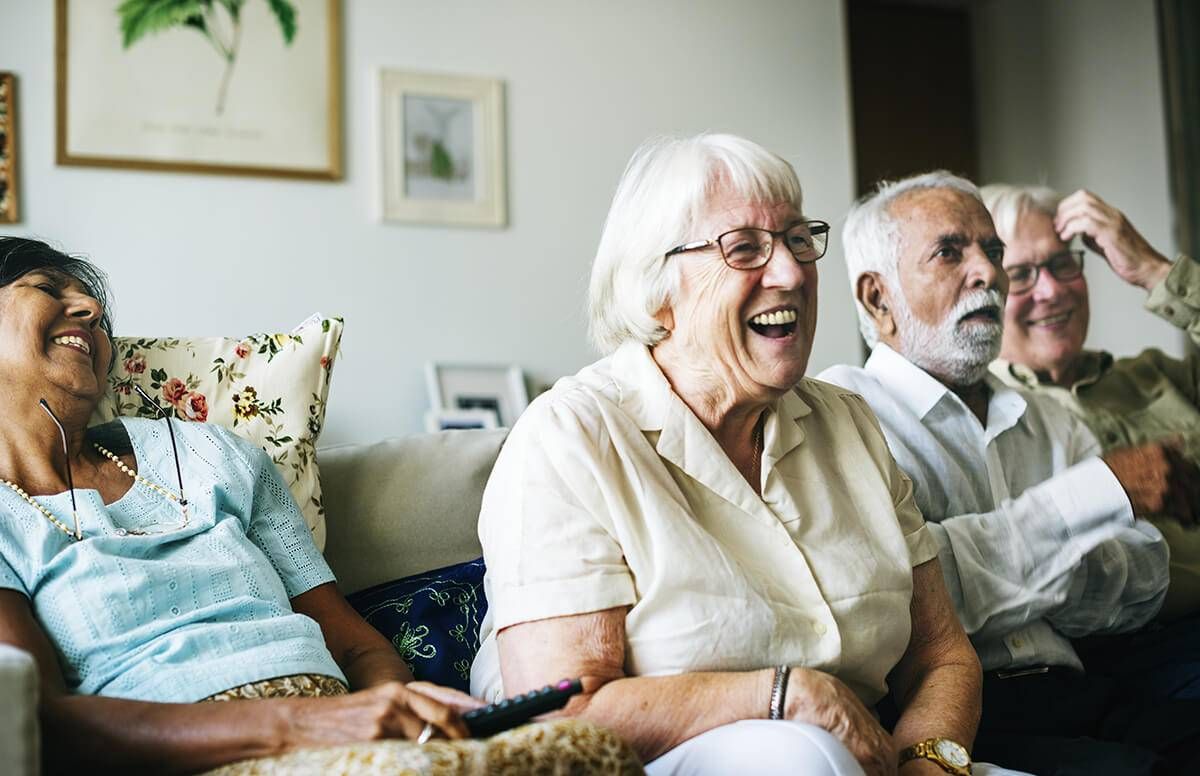The unfolding digital age, marked by the rise of generative AI and machine learning (ML), is far from exclusive to tech-savvy youth. These innovative technologies are becoming invaluable assets for seniors, helping them lead healthier, more active, and more productive lives. Here, we delve into the multifaceted ways digital tools are reshaping senior living and aging, focusing on aging in place, home health, and various care settings like retirement homes, nursing homes, and hospices.
Optimizing Home Health & Aging in Place
One area where technology significantly impacts seniors is in supporting the aging population's desire to stay at home longer or, in some cases, never leave home. Pioneered by artificial intelligence (AI) and machine learning (ML) capabilities, technologies such as telemedicine platforms, health-tracking apps and wearable devices make this possible.
Telemedicine platforms enable seniors to consult healthcare providers remotely, a trend that skyrocketed during the pandemic by 154% in the first quarter of 2020 for its convenience and safety.
Wearable devices with AI and monitoring capabilities have become indispensable for the aging population, providing both users and healthcare providers with valuable data and health metrics, including heart rate, sleep quality, and activity levels. Given that an estimated 27% of adults aged 60 and above use a wearable device regularly, wearable device use is likely to grow with increased internet adoption among seniors.
Enhancing Long-Term Care & Hospice Facilities
The digital era is not exclusive to the tech-savvy youth, as innovative AI and ML technologies are becoming vital tools for seniors. Technological advancements are reshaping operations at nursing homes, long-term facilities, and hospice centers, leading to more compassionate environments and improved care experiences for seniors.
Nursing Homes
With the integration of AI and ML technologies, today's nursing homes have evolved into modern living spaces that provide personalized care and significantly improve residents' quality of life. For instance, the implementation of health-monitoring wearables and telemedicine platforms allows for real-time tracking of resident health metrics, enabling healthcare providers to identify and respond promptly to potential health issues.
According to the Journal of Medical Internet Research, wearable technology can monitor vital signs, sleep patterns, and activity levels, providing crucial data to tailor care plans effectively. Additionally, telemedicine ensures that seniors have access to healthcare consultations right from their bedside, significantly reducing the risks associated with travel and exposure to communicable diseases.
Long-Term Care
AI and ML assist long-term care providers by predicting potential health issues, automating routine tasks, and facilitating personalized care plans. A recent McKinsey report shows that AI can analyze extensive patient data to predict potential health complications, allowing care providers to intervene proactively. Furthermore, automating routine tasks, such as medication management, frees up more time for caregivers to engage personally with residents.
Hospice Care
Technology can significantly improve symptom management and communication in hospice care, allowing caregivers to monitor patient status effectively and make timely care decisions. A study conducted by the American Journal of Hospice and Palliative Medicine revealed that electronic health records (EHRs) enhance patient information sharing between care teams, promoting better-coordinated care.
Moreover, telehealth has enhanced the quality of end-of-life care by allowing patients to communicate with their loved ones and healthcare providers remotely. As a bonus, technologies like VR are making inroads into hospice care, providing end-of-life patients with experiences that help them relax and reduce anxiety and pain levels.
As the healthcare landscape evolves, it is crucial to bridge the digital divide and these technological advancements are accessible and user-friendly for seniors. Doing so will allow more individuals to harness the benefits of our digital era, thus promising healthier, more active lives for seniors. The integration of technology and elder care is marked by health, independence, and connectivity, steering us toward a future where the golden years are indeed golden.
Promoting Active Lifestyles & Cognitive Health
Technology has expanded accessibility to fitness programs through remote and digital solutions that put active lifestyles in reach for seniors, regardless of their living situation. Exercise programs tailored to older adults, such as those offered by apps like SilverSneakers, encourage seniors to maintain their physical health.
Virtual Reality (VR) has been proven to enhance the physical rehabilitation field by offering specially designed programs that can accurately replicate precise physical movements, such as motion-sensitive games, making exercises more engaging and motivating for patients. For instance, a recent study found that 12 weeks of VR rehabilitation resulted in a greater improvement in the balance and gait of individuals with Parkinson's disease when compared to conventional physical therapy. With therapists having the flexibility to adjust VR settings, they are able to tailor programs to fit the unique needs of each patient.
Startups like MyndVR and Rendever, leverage VR technology to assist seniors in enhancing their memory and cognitive abilities. Empirical studies indicate that VR interventions can significantly improve cognitive and motor functions, such as attention, execution, memory, cognition and balance, in older adults with mild cognitive impairment or dementia.
Additionally, research suggests that VR could significantly improve cognitive rehabilitation efficacy for patients with conditions like multiple sclerosis (MS) and spatial deficits after a stroke by increasing sensory input and promoting multi-sensory integration and processing.
However, the application of VR technology isn't confined to cognitive and physical rehabilitation. A groundbreaking solution, BehaVR, for example, is leveraging VR to address mental healthcare needs, helping individuals cope with feelings of stress, anxiety, and fear.
Designed to help users take substantial steps forward in their mental health journey, BehaVR’s solutions incorporate education, mindfulness, and meta-cognition, enabling users to confront and address traumas, triggers, and fears in a safe, controlled environment.
The treatment programs combine scientifically-proven cognitive-behavioral and acceptance-based therapies with an immersive experience, allowing users to engage with their thoughts using more of their senses and leading to significant improvements in mental wellness, anxiety regulation, pain management, addiction recovery, and maternal health.
Solutions leveraging VR are now playing a crucial role in cognitive rehabilitation and mental health, offering promising, accessible, and customizable interventions that address the unique needs of each individual. As technology evolves, its potential to transform senior care extends beyond physical rehabilitation, revolutionizing how we approach elderly care and bringing a new era of comprehensive and holistic wellness solutions.
Facilitating Social Connections & Assisting Daily Living
Social isolation can be a serious concern for many seniors, especially those living alone. Thankfully, technology offers a solution here as well. Video chat platforms allow seniors to stay in touch with family and friends regardless of distance, potentially reducing the risk of depression by nearly 50%.
In the face of the pandemic, facilities such as Signature HealthCARE took innovative steps to maintain family bonds. Relying on telehealth, digital communication, and even traditional methods like letters, these care homes ensure that their residents can consistently communicate with their loved ones, even when physical visitation becomes challenging due to distance or safety guidelines.
An inspiring example of technological adaptation is the introduction of Famileo, a personalized family gazette that allows families to create personalized communications for their loved ones in care environments.
Famileo operates as a gazette-style newsletter, akin to reading the latest news, that features photos, messages, stories and updates from family members. This innovative solution allows residents to stay in touch with loved ones while eliminating the need for the residents themselves to navigate digital technology. Due to its overwhelming success in keeping families connected, the program expanded its reach to more facilities due to its overwhelming success within just seven months of its inception.
In addition, online social media platforms and forums provide seniors a community to share their experiences and wisdom, significantly enriching their social interactions and offering a sense of belonging and validation, ultimately combating social isolation and enhancing emotional well-being.
Moreover, online social media platforms and forums afford seniors a community to share their experiences and wisdom, greatly increasing social interactions and providing them with a sense of belonging and validation. As a result, it effectively addresses social isolation and improves emotional well-being.
Safety & Security Enhancement
Modern technologies such as GPS trackers and emergency alert systems offer invaluable peace of mind for seniors and their families, especially for those grappling with cognitive impairments like Alzheimer's disease. Wearable GPS devices can send real-time location updates to caregivers if the wearer strays from a safe area and alert systems facilitate swift communication with emergency services during critical incidents, such as falls.
According to the World Health Organization, falls pose a grave threat globally, representing the second leading cause of unintentional injury deaths and the top cause of injury-related fatalities among US adults over 65. In fact, it’s estimated that 1 of every 4 Americans over 65 years old will experience a fall yearly.
Addressing this critical issue, researchers from the Nanyang Technological University designed Mr. Bah, a device equipped with state-of-the-art sensors and guard rails, modeled like a motorized wheelchair. The smart system detects imbalance and activates a harness, effectively preventing falls. While regulatory approval is pending and funding obstacles exist, Mr. Bah represents a game-changing solution in fall prevention, providing care and autonomy for seniors while mitigating a significant safety risk.
From a broader perspective, technological evolution promises immense potential to enrich seniors' lives. A shining example is the Healthcare Workforce Innovation Coalition which unites 15 member companies to address crucial issues related to aging care and healthcare workforce challenges. Led by our partner, CEOc, the coalition confronts the unique workforce needs of healthcare companies in the Louisville area, forming a strategic partnership to proactively recruit, train, and retain healthcare personnel.
The challenge ahead is ensuring these technological advancements are accessible and user-friendly for seniors, thereby bridging the digital divide. This would allow everyone to harness the benefits of our digital era, promoting healthier and more active lives for seniors.
Conclusion
The digital age is revolutionizing the senior living landscape. It brings immense potential to enrich seniors' lives, whether they're aging in place or in various care settings. Ongoing efforts, such as the Healthcare Workforce Innovation Coalition, demonstrate how technology can address aging care and healthcare workforce challenges through deliberate organizational collaboration.
The challenge ahead lies in ensuring that these technological advancements are accessible and user-friendly for seniors. Bridging the digital divide would improve equity and inclusivity of the aging population and allow everyone to harness the benefits of our digital era, promoting healthier and more active lives for seniors.
To learn more about technological advancements improving patient experiences, download our eBook, Personalizing Patient Engagement Through Data-Driven Omnichannel Experiences.


.png)

.png)